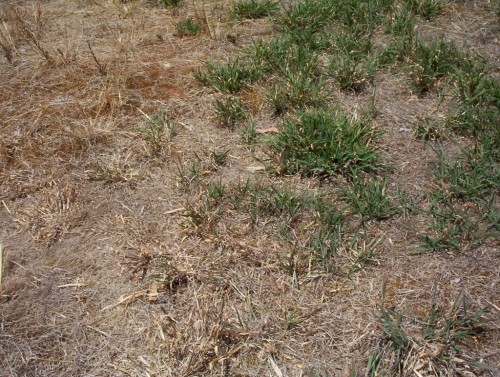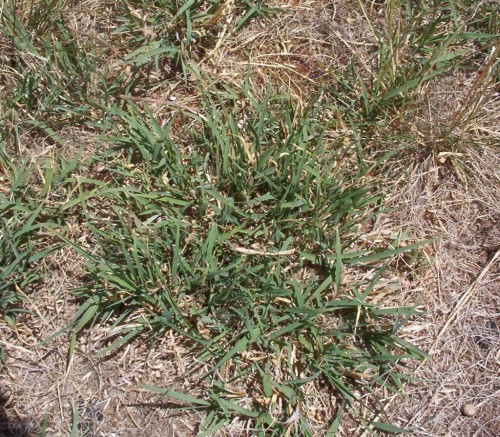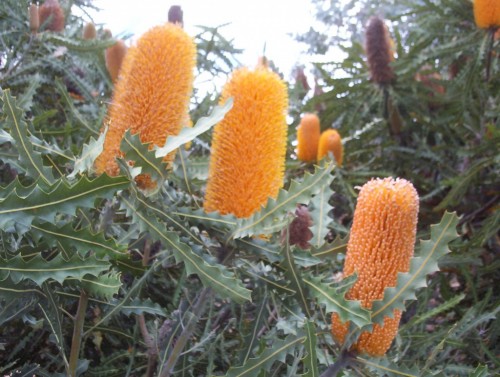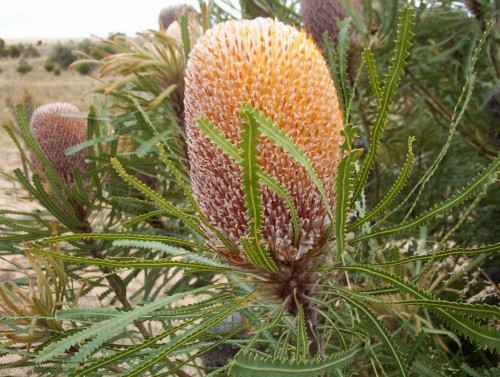Chloris truncata (Windmill Grass)
This grass is one that is on a list of reccommended lawn substitutes, along with Austrodanthonia (Wallaby Grass), and Microlaena stipoides (Weeping Rice Grass). I was warned off the Microlaena because it really is a higher rainfall species, 500 – 700mm rain. As we are in a rain shadow, and a winter wet dry summer area (344mm rain per year), it was going to be a struggle to keep this looking reasonable without using more water than I wanted to. After all it is supposed to substitute for water hungry grasses.
The good thing that happened is that the Windmill Grass is green and has been for two and a half weeks. That is in spite of at least four days with temperatures above 41C and at least seven days around 36C. I will be letting it go and observing how long it takes to be unacceptable as a lawn. I don’t see much point in having a lawn if it can’t be kept green.I was very pleased with the appearance of the plant. I had dismissed this species because my experience had shown it to be too tufted and therefore coarse to be a lawn. However the plant has spread and stayed low since it was mown about four weeks before the watering incident.
I am not sure how this will go so far as foot traffic is concerned. I will deliberately use part of it as a pathway to see how it copes with occasional walking. Unfortunately the patch is not near the house where I could walk on it constantly.
Some people have stated (and it is also in some articles) that Chloris behaves like an annual. We have not seen this characteristic because it is mown every year in late spring as part of our fire protection and to make it more pleasant to walk around our fruit trees. The mower is usually set at 3 out of a possible 6 settings. The mower is driven around on the 6 setting. 3 is a bit low for the spear grasses but for the Chloris it seems to be ideal. The patch seems to increase in size and thicken every year.
I am not sure what to do now. I think I will dig a few clumps and divide them and grow them on in forestry tubes to be planted out with the late autumn rains next year. I will also at that time try dividing and planting dirsctly into the ground. In fact that is a possibility now. (Too many other things to do.)
Preventing Frost Damage In Australian Native Plants
I was reading some past copies of Journals from interstate groups of the Australian Plants Societies. I came across an article by Rodger Elliott in ‘Native Plants for New South Wales’. It was titled ‘Can we prevent frost damage?’ According to Rodger there are a number of strategies we can use to minimise the damage like many of our plants suffered last winter. Plants which are labelled as being frost hardy have the proviso added ‘in years of normal rainfall’. So in times of drought the likelihood of frost damage is increased. Now is a good time to take stock and perhaps move plants which may be at risk of damage and plan other precautions for next Autumn.
Frost damage can occur in some plants at about 1-2 degrees C, in others at about -4 degrees C and more at -8 degrees C.
Some Ways To Minimise Frost Damage
- Only cultivate frost tolerant plants.
- Look for areas where frost does not occur and use these places to grow frost tender plants.
- Do not apply nitrogenous fertilisers after mid summer in frost prone areas.
- Frost damage occurs when cold air is unable to flow away from an area. Make sure weeds are removed and mulches are flattened rather than heaped around plants. Hedges can prevent the free flow of air.
- Keep soils moist.
- Gravel and screenings are better mulches in frost prone areas.
- Do not prune in winter or spring until frosts have finished for the season.
- Hessian is a good cover to provide overhead protection. Do not use plastic.
- It has been shown that seaweed sprays strengthen plant cell walls and therefore have a beneficial effect in protecting plants from some frost damage. These are also thought to assist plants to withstand excessive heat.
Lasiopetalum baueri (Slender Velvet Bush)
The plant in the photo (two plants in fact) were pushed out because of the development taking place. This patch was suppose to be saved.
Lasiopetalum baueri is a pretty plant when in flower and attractive anyway because of the overall rusty appearance caused by the dense hairs on the stems. It is drought tolerant and hardy to most frosts. It puts on its flower display in spring and responds well to light pruning after flowering. It would make a good hedge or low screen plant. The one I have in the garden is a rounded shrub because of the tip pruning that I do to take cuttings
More Banksias
There were a number of Banksias in flower at the arboretum including Banksia ashbyi mentioned the other day. This photo is much better.
All the plantings are on deep sand. The soil seems to hold moisture quite well despite being in a low rainfall area.
Banksia hookerana (Acorn Banksia)
We took a day off today to check out the birds and plants at the Arboretum. We took a picnic lunch and thermos and found a spot near the Banksias which were in flower, to have lunch. Actually there were a lot of plants in flower so hopefully I have some good photos to down load.
Banksia hookerana was one that was covered in flowers, some still to open fully. It is a medium shrub 2-3m high. It is frost and drought tolerant and would make a good low windbreak plant. I think it would be a good cut flower also.




